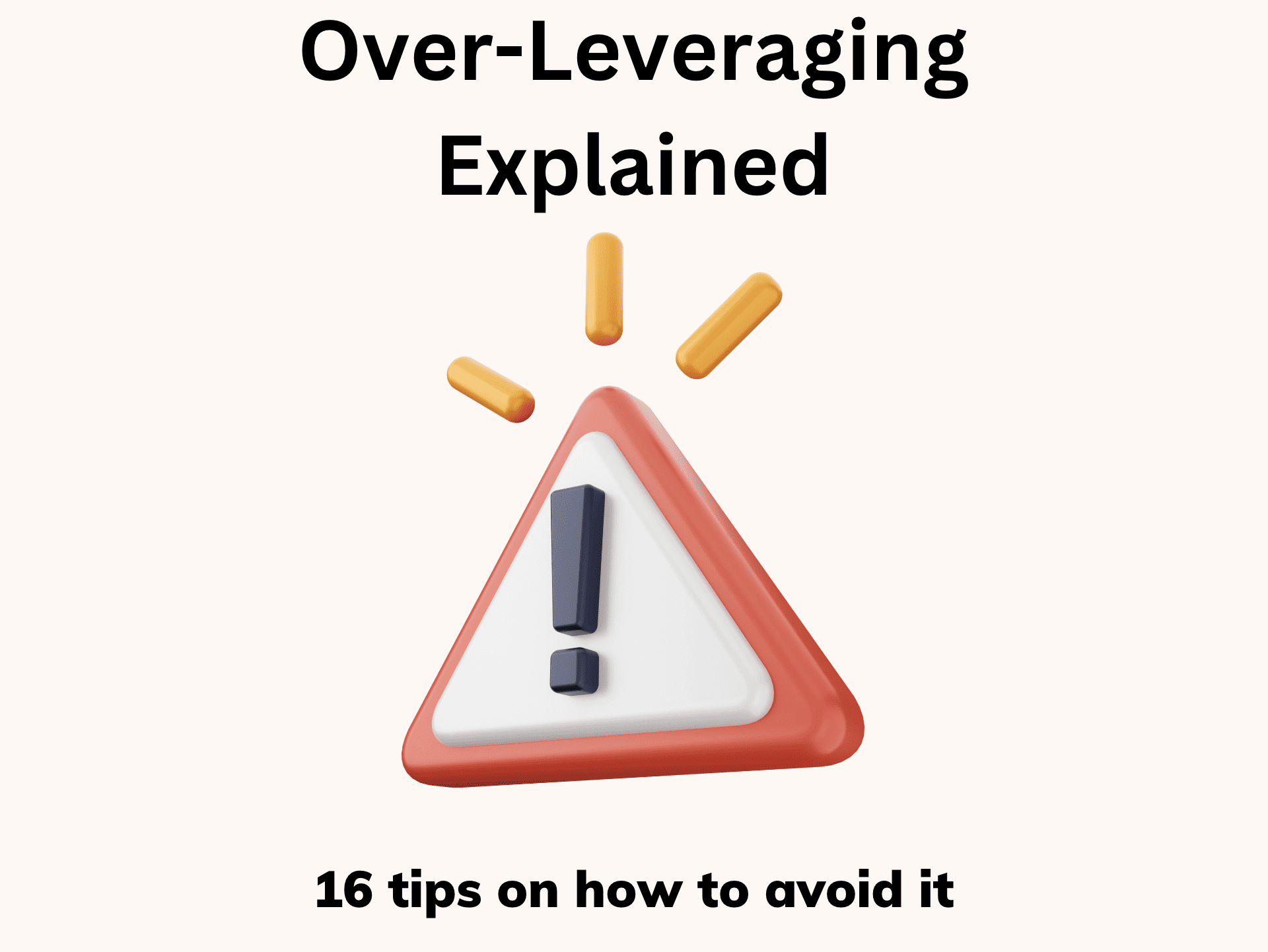Did you know that the average person can lift about 1.5 times their body weight, but in trading, some believe they can handle 10 times that in leverage? This article dives into the critical topic of leverage in trading, offering strategies to avoid related losses. You'll learn how to protect yourself from leverage risks, the best risk management tools, and how to set effective leverage limits. We’ll also cover common mistakes, the role of stop-loss orders, and how position sizing can mitigate risks. Additionally, discover how market volatility influences leveraged trades and what signs indicate over-leveraging. By understanding these concepts, traders—especially beginners—can navigate the complexities of leverage safely and effectively. For more in-depth insights, DayTradingBusiness is here to assist you on your trading journey.
How can traders protect themselves from leverage risks?
Traders can avoid leverage-related losses by using lower leverage ratios, setting strict stop-loss orders, and only risking a small percentage of their capital per trade. They should also educate themselves on margin requirements, avoid overtrading, and maintain disciplined trading plans to prevent emotional decisions. Regularly reviewing position sizes and staying within their risk tolerance helps prevent large losses from leverage.
What are the best strategies to avoid leverage-related losses?
Use low leverage or avoid it entirely to limit risk. Always set stop-loss orders to exit trades before losses grow. Keep position sizes small relative to your account balance. Diversify your trades to avoid heavy exposure on one asset. Stick to a solid trading plan and avoid impulsive decisions. Regularly review and adjust your leverage use based on market conditions. Educate yourself on how leverage magnifies gains and losses. Avoid overtrading and chase fewer high-quality setups.
How does leverage increase the risk of losing money?
Leverage amplifies both gains and losses. When markets move against a trader, high leverage causes losses to grow quickly, potentially exceeding the initial investment. To avoid leverage-related losses, traders should use lower leverage, set stop-loss orders, and only trade with money they can afford to lose.
What risk management tools help control leverage exposure?
Margin limits and stop-loss orders help control leverage exposure by setting predefined exit points. Position sizing tools ensure traders don’t overextend on any trade. Risk/reward ratio calculators guide traders to manage potential losses relative to gains. Using leverage caps and maintaining a risk buffer also prevent excessive losses. These tools keep leverage use disciplined and minimize the risk of large losses.
How should traders set leverage limits to prevent losses?
Traders should set leverage limits by choosing lower leverage ratios, like 2:1 or 5:1, to reduce risk. Use strict stop-loss orders to cap potential losses before they escalate. Avoid over-leveraging on volatile assets and stick to a risk management plan. Regularly review and adjust leverage based on market conditions and account size. Never chase losses or increase leverage after a losing trade.
What are common mistakes traders make with leverage?
Traders often overuse leverage, risking more than they can afford to lose. They neglect proper risk management, such as setting stop-loss orders. Many underestimate market volatility, leading to sudden losses. Overtrading with high leverage amplifies small mistakes. Ignoring position size limits increases exposure to margin calls. Failing to understand leverage mechanics causes misjudged risk. To avoid leverage-related losses, use low leverage, set clear stop-losses, and stick to a disciplined trading plan.
How can beginners use leverage safely in trading?
Beginners should start with low leverage ratios, like 2:1 or 3:1, to limit risk. Always set stop-loss orders to protect against big swings. Understand the assets thoroughly before using leverage, and avoid trading with borrowed money you can't afford to lose. Use demo accounts to practice leverage strategies without real money. Keep leverage levels conservative until you gain experience and confidence.
What role does stop-loss orders play in managing leverage risk?
Stop-loss orders limit leverage-related losses by automatically closing positions when prices move against your set threshold. They prevent small market swings from turning into large, uncontrollable losses, helping traders protect their capital. Using stop-loss orders effectively reduces the risk of losing more than intended when trading with high leverage.
How does position sizing reduce leverage-related losses?
Position sizing limits the amount of capital at risk per trade, reducing the impact of leverage-related losses. By trading smaller positions relative to your account, you prevent large swings that leverage can amplify. This way, even with unfavorable moves, losses stay manageable, protecting your account from wipeouts caused by high leverage.
What are the signs of over-leveraging in trading?

Signs of over-leveraging include rapid account balance drops, margin calls, and frequent forced liquidations. You might notice increased volatility in your positions and difficulty maintaining margin requirements. Over-leveraging often leads to large losses from small market moves, making your account more vulnerable. To avoid leverage-related losses, use conservative leverage ratios, set strict stop-loss orders, and never risk more than you can afford to lose. Regularly monitor your margin levels and stay within your risk tolerance to prevent overexposure.
How can traders diversify to offset leverage risks?
Traders can diversify by spreading investments across different asset classes, industries, or markets to reduce reliance on leverage in any single area. Using smaller position sizes and setting strict stop-loss orders helps limit potential losses from leverage. Incorporating uncorrelated assets, like bonds or commodities, balances risk. Regularly reviewing and adjusting portfolios prevents overexposure to volatile or highly leveraged positions. Avoiding excessive leverage altogether and practicing disciplined risk management are key to minimizing leverage-related losses.
What are the advantages of trading with lower leverage?
Trading with lower leverage reduces the risk of large losses when the market moves against you. It keeps your capital safer, preventing margin calls and forced liquidations. Lower leverage encourages disciplined trading, making you less likely to overtrade or take reckless positions. It also minimizes the impact of sudden market swings, helping you maintain a clearer risk-reward balance. Overall, it provides a more stable trading experience and better preserves your capital over time.
How does market volatility affect leveraged trades?
Market volatility increases the risk of leveraged trades because price swings can quickly wipe out your margin. Rapid movements mean your position can hit stop-loss or margin calls unexpectedly. To avoid leverage-related losses, traders should use lower leverage, set tight stop-loss orders, and stay updated on market news. Managing position size and avoiding overexposure also helps prevent big losses during volatile periods.
What should traders do during high-volatility periods?

During high-volatility periods, traders should reduce leverage, tighten stop-loss orders, and avoid overtrading. Focus on risk management, set clear exit points, and stay disciplined to prevent leverage-related losses. It's best to lower position sizes and avoid impulsive trades until volatility stabilizes.
How can traders analyze their leverage use effectively?
Traders analyze leverage use effectively by monitoring margin levels and position sizes regularly. They set strict stop-loss orders to limit potential losses from high leverage. Using leverage calculators helps assess risk before entering trades. Reviewing past trades to identify over-leverage patterns prevents repeated mistakes. Keeping leverage ratios in check ensures they don’t expose themselves to excessive risk. Staying updated on market volatility helps adjust leverage accordingly.
Learn about How Do Institutional Traders Use Leverage in Day Trading?
How does leverage impact trading psychology and decision-making?
Leverage amplifies both gains and losses, increasing emotional stress and impulsive decisions. It can lead to overconfidence during winning streaks and panic during losses, clouding judgment. To avoid leverage-related losses, traders should use conservative leverage ratios, set strict stop-losses, and stick to their trading plan. Managing position sizes and maintaining emotional discipline help prevent reckless trading driven by leverage-induced pressure.
Conclusion about How can traders avoid leverage-related losses?
In conclusion, effectively managing leverage is crucial for mitigating risks and avoiding losses in trading. By implementing sound strategies like setting appropriate leverage limits, utilizing stop-loss orders, and practicing effective position sizing, traders can protect their investments. Additionally, understanding market volatility and avoiding common mistakes further enhances risk management. For those looking to deepen their knowledge and enhance their trading skills, resources from DayTradingBusiness can provide valuable insights and support.